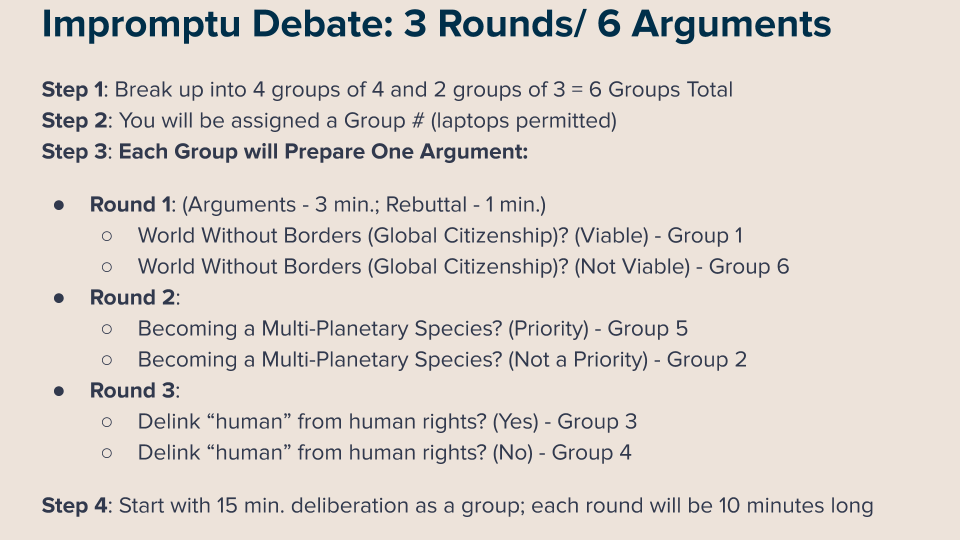
Disrupting Unjust Systems Through Behavioral Science & Design Thinking, a half-semester course that concluded earlier this month, explored how to address issues of bias, stereotyping, and customary practices that shape discriminatory systems globally. From discrimination in policing practices and workforce hiring to differential medical care for patients and lenient sentences for perpetrators of sexual violence against women, unjust systems adversely affect the lives of marginalized communities globally.
The course, taught at Columbia University’s Graduate School of Social Work, looked at what tools future social workers could use to better understand, navigate, and overcome systems of oppression. Students learned that in order to effectively disrupt discriminatory systems, individuals and organizations designing interventions need to identify the underlying motivations or cultural factors that shape biases and lead to discriminatory outcomes. By identifying the root of the problem within the framework of international human rights law and applying the tools of behavioral science and design thinking, students designed interventions to overcome structural discrimination.
Co-led by adjunct professors Hansdeep Singh, JD, LLM, ICAAD Co-Founder and Elizabeth Long, MA, MS, ICAAD Behavioral Design Lead, the course combined lectures, interactive dialogues, and workshop-style activities with a multidisciplinary group of facilitators, including Courtney Cogburn, PhD, Associate Professor at the School of Social Work.
The ICAAD team is planning teach a 5 week version of the course again, online at Columbia.
Below are some snippets of what was covered each week in class.
Week 1: Disrupting Discriminatory Systems
Purpose/Learning Goal:
Locating structural discrimination issues within a human rights framework while better understanding the intersectionality of discriminatory issues. This will be the first time for many students to understand that there are specific bodies of law that protect women, racial identity, culture, migrants, disability rights etc.
Key Lecture Points:
- Understanding causes of structural discrimination
- Applying a structural discrimination issue to specific human
rights treaty bodies - What is the mechanism by which countries are held accountable
for violations of human rights under specific treaty bodies
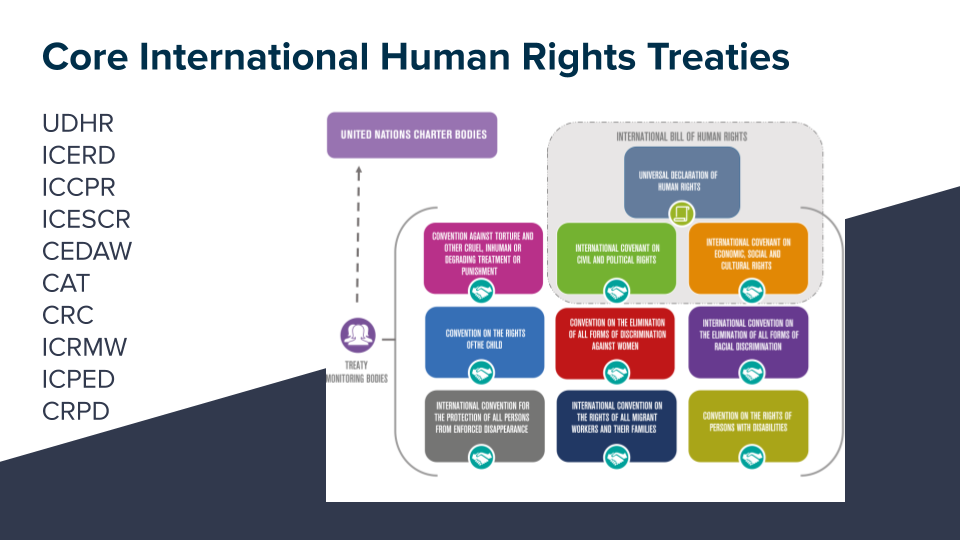
Exercise:
Cluster Mapping – The exercise was critical for students, who broke up into groups, to understand how one human rights issue can apply to several treaty bodies and offer different avenues to advocate for justice.
Week 2: Anti-Oppressive Design
Purpose/Learning Goal:
Understanding design theory through a design justice lens. How can advocates design effective interventions that are rooted in principles of inclusivity, centering of vulnerable communities, integrating intersectionality, and engaging multidisciplinary stakeholders? How does design justice challenge the matrix of domination?
Key Lecture Points:
“Design justice is a field of theory and practice that is concerned with how the design of objects and systems influences the distribution of risks, harms, and benefits among various groups of people. Design justice focuses on the ways that design reproduces, is reproduced by, and/or challenges the matrix of domination (white supremacy, heteropatriarchy, capitalism, and settler colonialism)” – Prof. Sasha Costanza-Chock
Exercise:
Re-Framing the Problem & Re-Imagining the Solution: Students were given a real-life example of the MTA looking to implement a policy to reduce fare evasion. Students were asked to think about whether fare evasion was itself the actual problem and whether there were other more equitable interventions.
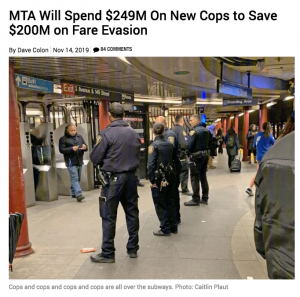
Week 3: Design Thinking Part I
Purpose/Learning Goal:
Building empathy and understanding the experiences and journeys of vulnerable groups that result in adverse or undesired outcomes through behavioral design.
Key Lecture Points:
- What are design processes?
- What are Cognitive and Behavioral “Quirks”?
- What is the difference between quirks and biases?
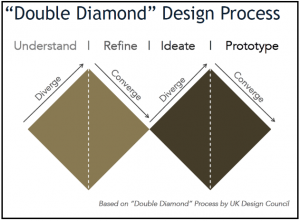
Exercise:
Experience Diagram – Similar to a Journey Map, the purpose behind an experience diagram is to chart a person’s actual or potential experiences through a process as a way to build empathy. It also illustrates how different systems and different actors influence the person’s journey.
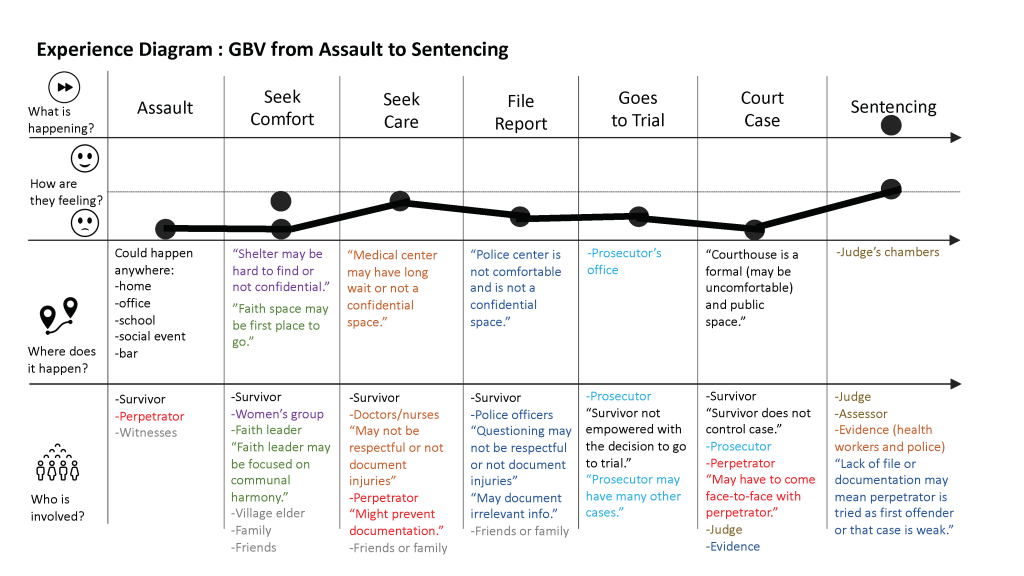
Week 4: Design Thinking Part II
Purpose/Learning Goal:
Identifying the systemic – which can be structural, behavioral and cognitive – factors that are causing the adverse or undesired outcome for a selected vulnerable group(s).
Key Lecture Points:
- Understanding systems mapping
- Understanding behavioral / process mapping
Exercise:
Systems mapping helps you see the big picture of how systems and stakeholders are interlinked.
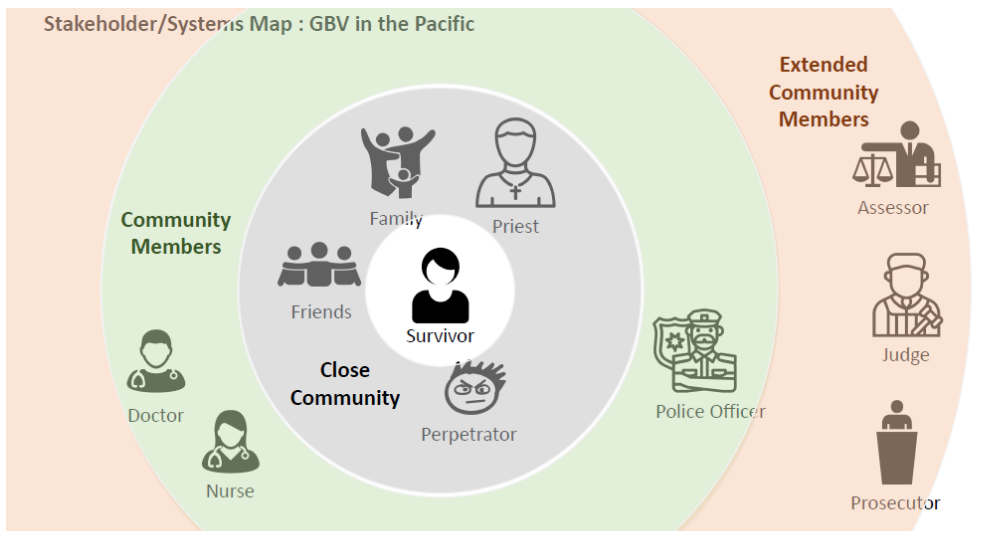
Week 5: Design Thinking Part III
Purpose/Learning Goal:
Designing an intervention with a vulnerable group that addresses the systemic factors to help them achieve their positive outcome. This starts with problem framing, asking how might we (HMW) questions that guide your ideation phase. Laddering, a next step, allows you to broaden or narrow your HMW question. Additionally, we will look at how behavioral and cognitive quirks can improve intervention design.
Key Lecture Points:
- Linking “designing the right thing” with “designing things right”
- Identify gaps between the current state and future state
- The “how might we” method takes information learned and is used to think of solutions
- How: reminds us to be positive and imagine there is a solution
- Might: reminds us there are many possible options and ways to design solutions
- We: reminds us that it is “us” and not “me”
Week 6: Group Presentations
Purpose/Learning Goal:
Students presented their intervention ideas and received feedback from each other. The presentations showed the level of detail with which each group explored their discriminatory system and how they would work to address the barriers perpetuating discrimination.
Week 7: The Future of Discrimination
Purpose/Learning Goal:
Begin to imagine how two existential threats, climate change and artificial intelligence, might amplify discrimination in the future.
Key Lecture Points:
Exploring the difficulty of categorizing groups of vulnerable people who currently aren’t afforded protection under international law. Wrestled with why none of the laws that apply to refugees and migrants apply to those displaced by climate change.
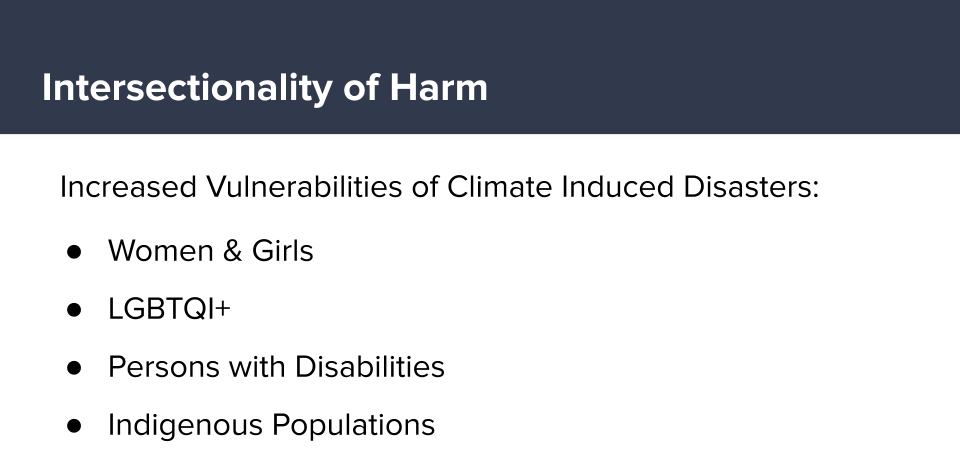
Separately, we explored how AI as a technology has created some amazing advances (e.g. robotic surgery, extreme weather predictions), but also threats to basic civil liberties (e.g. mass surveillance, discrimination in predictive policing and bail decisions).
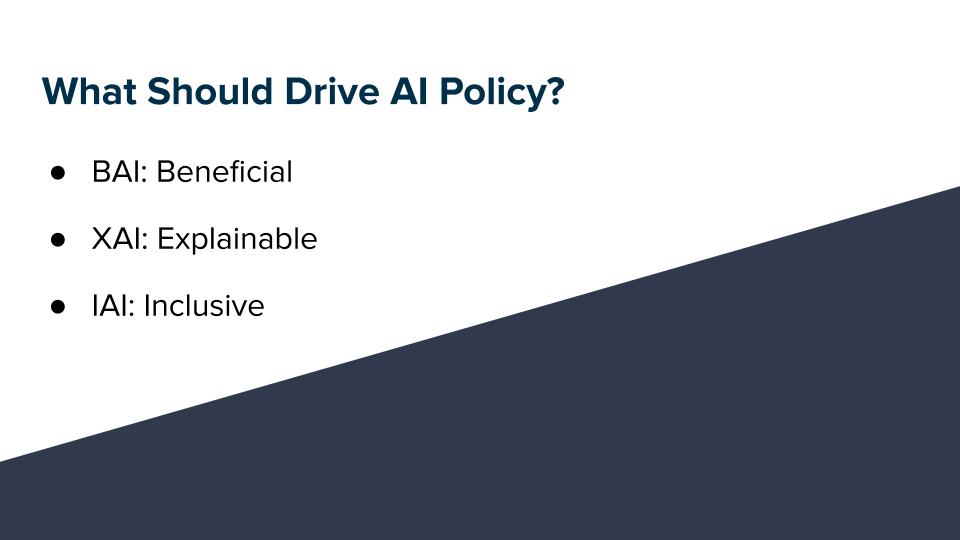
Exercise:
Finally, we combined these challenges to ask several broad questions that the students debated.
